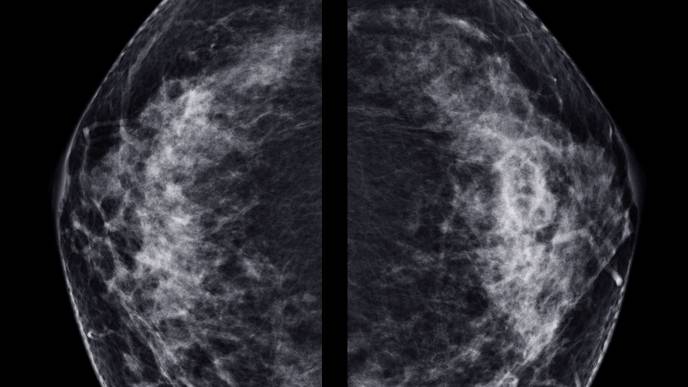Clinical Factors Associated with Background Parenchymal Enhancement on Contrast-Enhanced Mammography

01/25/2023
According to a study published in the American Journal of Roentgenology (AJR), both menstrual status and menstrual cycle time are associated with the degree of early background parenchymal enhancement (BPE) on contrast-enhanced mammography (CEM), which could influence CEM interpretations.
"Clinical factors, including history of breast cancer or breast cancer treatment, breast density, menstrual status, and time of menstrual cycle, are associated with degree of early BPE on CEM," wrote corresponding author Yajia Gu from the department of radiology at Fudan University Shanghai Cancer Center in China. "In premenopausal patients, degree of BPE is lowest on days 8–14 of the menstrual cycle."
This AJR study included 207 patients (median age, 46 years) who underwent CEM between April 2020 and September 2021. Two radiologists independently assessed BPE degree on CEM (minimal, mild, moderate, or marked) based on two criteria: using the first of four obtained views; using the first two of four obtained views. Reviewing electronic medical records for clinical factors, the radiologist pair reached consensus for breast density via CEM.
Ultimately, degree of early BPE on CEM was negatively associated with age, history of breast cancer, chemotherapy or radiation therapy, as well as perimenopausal and postmenopausal status. Meanwhile, early BPE degree on this modality was positively associated with dense breasts and premenopausal status with irregular cycles.
While acknowledging their retrospective study's small sample size, the authors added that "the findings have implications for CEM scheduling and interpretation," given the potential impact of BPE on diagnostic performance.
More information: Simin Wang et al, Association of Clinical Factors and Degree of Early Background Parenchymal Enhancement on Contrast-Enhanced Mammography, American Journal of Roentgenology (2023). DOI: 10.2214/AJR.22.28769
Citation: Clinical factors associated with background parenchymal enhancement on contrast-enhanced mammography (2023, January 25) retrieved 25 January 2023 from https://medicalxpress.com/news/2023-01-clinical-factors-background-parenchymal-contrast-enhanced.html
This document is subject to copyright. Apart from any fair dealing for the purpose of private study or research, no part may be reproduced without the written permission. The content is provided for information purposes only.

Facebook Comments